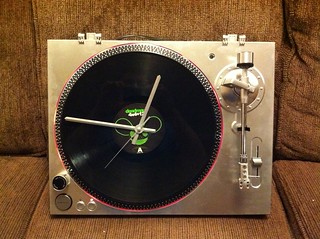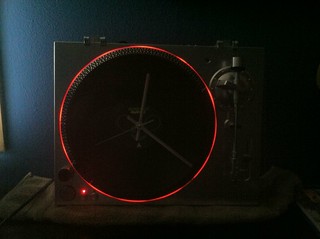Posted: May 23, 2013 at 1:01 AM / IP Logged
Posted: May 23, 2013 at 2:47 AM / IP Logged
Posted: May 23, 2013 at 4:57 AM / IP Logged
Posted: May 23, 2013 at 2:11 PM / IP Logged
Posted: May 23, 2013 at 4:24 PM / IP Logged
Posted: May 23, 2013 at 4:26 PM / IP Logged
Posted: May 23, 2013 at 6:49 PM / IP Logged
Posted: May 23, 2013 at 7:15 PM / IP Logged
Posted: May 23, 2013 at 8:26 PM / IP Logged
Posted: May 23, 2013 at 8:30 PM / IP Logged
 Printable version
Printable version


| You cannot post new topics in this forum You cannot reply to topics in this forum You cannot delete your posts in this forum You cannot edit your posts in this forum You cannot create polls in this forum You cannot vote in polls in this forum |

| Search the12volt.com |
Follow the12volt.com 
Sunday, December 28, 2025 • Copyright © 1999-2025 the12volt.com, All Rights Reserved • Privacy Policy & Use of Cookies


Sunday, December 28, 2025 • Copyright © 1999-2025 the12volt.com, All Rights Reserved • Privacy Policy & Use of Cookies
Disclaimer:
*All information on this site ( the12volt.com ) is provided "as is" without any warranty of any kind, either expressed or implied, including but not limited to fitness for a particular use. Any user assumes the entire risk as to the accuracy and use of this information. Please
verify all wire colors and diagrams before applying any information.






 I've done this once before, but the record player I used before was in better condition than the one I have now. This was my end result:
I've done this once before, but the record player I used before was in better condition than the one I have now. This was my end result:

 ALSO! If you know how to make the hands of the clock light up I'd love to hear it!
So moving on, on this second record player, I used a DMM on various locations to try and find a good power source for the LEDs. However, the highest voltage I can find is about 2.6, which I don't think is enough. Also, nothing will work on the record player: the turn table won't turn and the motorized arm doesn't work. Unlike my previous project, my plan this time is to bypass the existing wiring and put in my own. And this is where I need some help.
I don't want to mess with batteries to power the LEDs. I'd like to be able to plug this thing into the wall, flip a switch, and have the LEDs turn on. So if I'm understanding things correctly, I'll need a transformer to make this happen? I'm thinking it would go like this: power cord to transformer, then transformer to LEDs/resistors. Is that right? I keep reading about transformers and wattage and then I get more confused.
ALSO! If you know how to make the hands of the clock light up I'd love to hear it!
So moving on, on this second record player, I used a DMM on various locations to try and find a good power source for the LEDs. However, the highest voltage I can find is about 2.6, which I don't think is enough. Also, nothing will work on the record player: the turn table won't turn and the motorized arm doesn't work. Unlike my previous project, my plan this time is to bypass the existing wiring and put in my own. And this is where I need some help.
I don't want to mess with batteries to power the LEDs. I'd like to be able to plug this thing into the wall, flip a switch, and have the LEDs turn on. So if I'm understanding things correctly, I'll need a transformer to make this happen? I'm thinking it would go like this: power cord to transformer, then transformer to LEDs/resistors. Is that right? I keep reading about transformers and wattage and then I get more confused.
 I basically don't know for sure if I can wire the LEDs safely this way. Can a very wise member with vast knowledge and great experience help me out on this please?
Now that I've explained my plan, here are my questions:
1. Will that transformer work for this project? If not, why? And which transformer would you suggest if it won't work?
2. Will that dimming switch work for this project? If not, why? And which dimming switch would you suggest if it won't work?
3. Am I totally off base and need to do more research before annoyingly asking questions?
I basically don't know for sure if I can wire the LEDs safely this way. Can a very wise member with vast knowledge and great experience help me out on this please?
Now that I've explained my plan, here are my questions:
1. Will that transformer work for this project? If not, why? And which transformer would you suggest if it won't work?
2. Will that dimming switch work for this project? If not, why? And which dimming switch would you suggest if it won't work?
3. Am I totally off base and need to do more research before annoyingly asking questions?  4. Anything else you want to tell me such as suggestions or tips?
5. If you have any other cool ideas that I could do with the lights please let me know.
4. Anything else you want to tell me such as suggestions or tips?
5. If you have any other cool ideas that I could do with the lights please let me know.

 I'm such an idiot. Typical me - I looked at the LEDs and not the hands!
I'm such an idiot. Typical me - I looked at the LEDs and not the hands!  If I understand you correctly, a dimming transformer is not a good way to go and I should instead go with a plugpack. I looked into using a plugpack a little bit prior to my posting on here, but I wasn't sure about them.
I've read your comments several times and although I think I understand most of it, I'm going beyond my knowledge/comfort level with this stuff. You're idea of a plugpack got me thinking of going with a more "premade" way. Now if I go this route, I'd buy one of
If I understand you correctly, a dimming transformer is not a good way to go and I should instead go with a plugpack. I looked into using a plugpack a little bit prior to my posting on here, but I wasn't sure about them.
I've read your comments several times and although I think I understand most of it, I'm going beyond my knowledge/comfort level with this stuff. You're idea of a plugpack got me thinking of going with a more "premade" way. Now if I go this route, I'd buy one of  Sometimes I over complicate things in my head and need to be set straight.
Sometimes I over complicate things in my head and need to be set straight.


